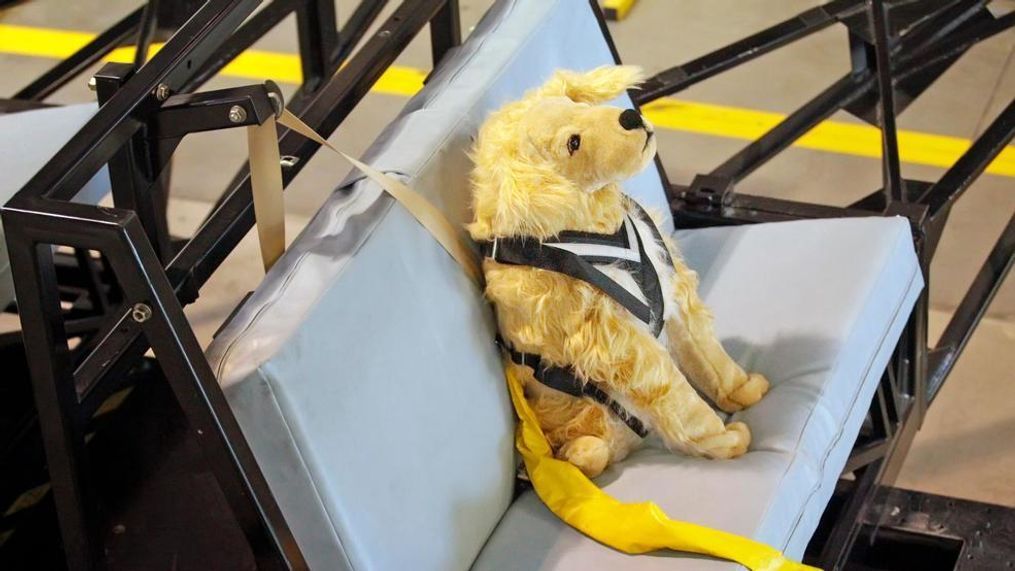Dogs in Cars: Why your dog should be restrained [Part 1]

Imagine a 10-pound bowling ball hitting you in the back of the head.
That was the vivid imagery Lindsey Wolko, founder and CEO of Center for Pet Safety, used to describe a crash where an unrestrained Yorkshire Terrier flew through the vehicle, striking the owner in the back of the head.
The driver had to be air-lifted to a hospital because his injuries were so severe.
Wolko learned about this after the fact, when the wife of the owner called CPS and asked how they could prevent this from happening again.
In another instance, Wolko learned about a Maltese that was paralyzed during a crash when it was clotheslined by an extension tether.
“It’s such an important thing that people just don't think about -- until their dog gets hurt,” Wolko said. “And that’s when we hear from them.”
Cute or not cute, physics is physics, and a 60-pound dog can quickly become a projectile hurling through space with 2,700 pounds of force.
Which means it could easily be ejected from the vehicle.
As Wolko pointed out, most dogs that get thrown from a vehicle are killed – either from the impact or from an on-coming vehicle.
So, just as you would put your infant in a car seat, you should restrain your dog as well.
Curiously, only one state, Rhode Island, requires pets to be restrained or under the physical control of another passenger (not the driver) with a fine up to $200 for violations.
“We get calls all the time from owners who lose their pets, and it could have been avoided,” Wolko said.
How? By properly restraining your pet.
Culled from the CPS website and a conversation with Wolko, here are some basic safety tips for your dog while traveling in a car:
DON'T let your dog hang his head out the window. Road debris can cause serious (and costly) damage to both eyes and nostrils. Additionally, your dog could be seriously injured or killed if its head is outside of the vehicle in the event of a crash.
DO restrain your dog using a harness. CPS has several crash-test certified harnesses on its website recommended for restraining your dog. This means the materials are deemed durable in crash situations. This will not only protect pet owners but also give their dog the best chance of survival.
DON'T use an extension tether. While it may seem like a good idea to give your pet some room to roam, during a crash an extension tether could send your dog through the windshield or cause paralysis from whiplash.
DO look for a CPS-certified restraint. Just because a product says it’s good, it may not be. The pet industry currently has no oversight, and marketers can make any claim they want and send it out to the public without fear of reprisal. CPS has a certification program that crash tests harnesses for dogs up to 90 pounds.
DON'T be distracted by your pet. And the best way to ensure that is to restrain it in a harness or a crate.
“I don’t know if there’s going to be a perfect solution for any pet owner,” Wolko said. “But being restrained is better for everyone than not being restrained.”
The Bottom Line:
While you may think it’s cruel and unusual punishment to restrain your pet in a car, you’re actually doing it – and yourself – a huge, life-saving favor.
In fact, on the mild side, torn ACLs, paralysis and road debris that cause eye damage could be in your future if you don’t restrain your pet. In the extreme, not restraining your pet could kill you, your pet or both.
Visit www.centerforpetsafety.com for more information on certified pet restraints and tips on how to keep your pet safe while traveling.
Also, stay tuned for Part 2 of this series: The trouble with big dogs.
